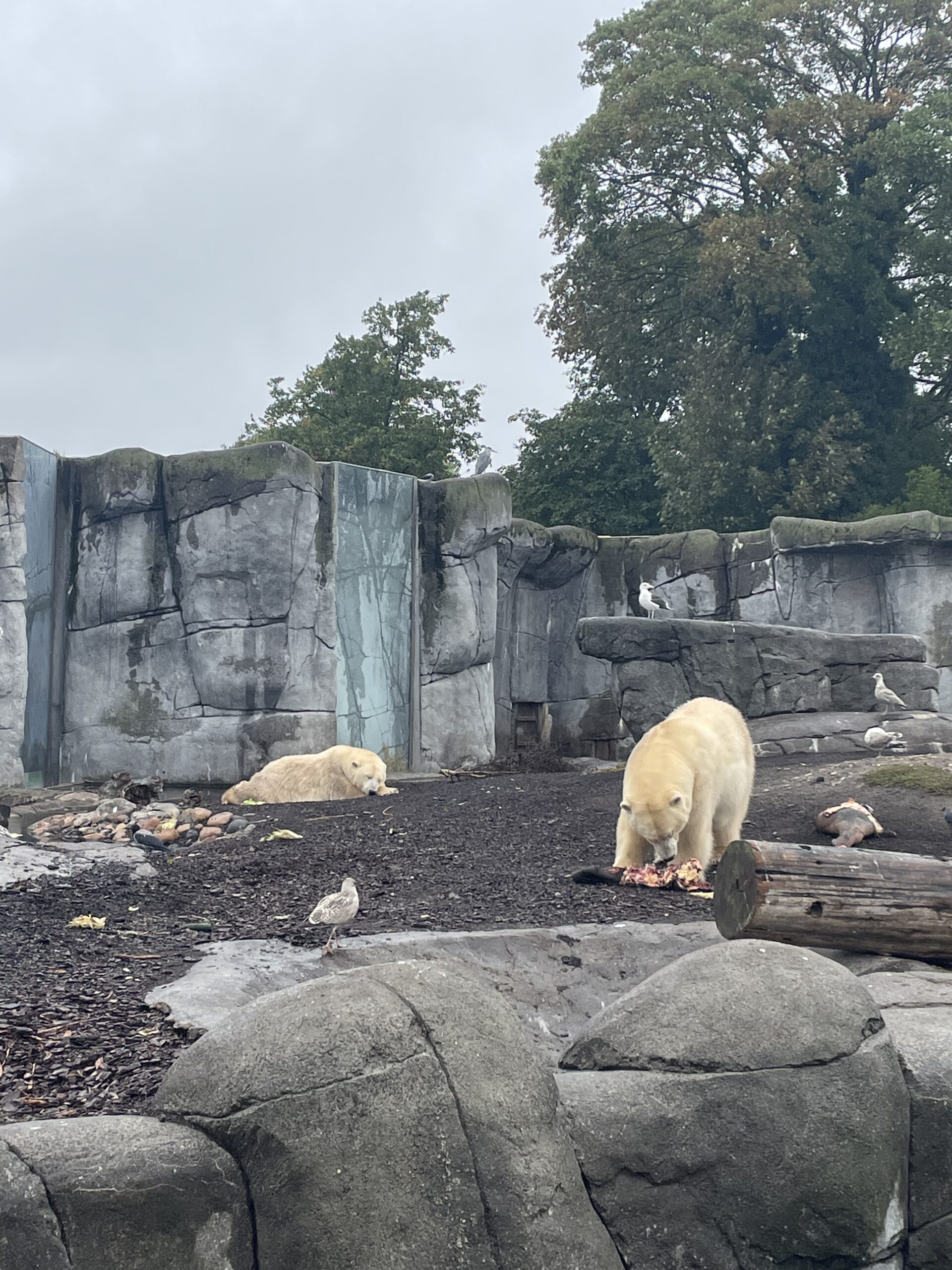
Copenhagen Zoo- Polar Bears!
This past week, I went to the Copenhagen Zoo for one of my Biology courses. It was a lot of fun seeing so many species of animals that I had never seen before. Even though I had a great time, I do not necessarily support zoos for multiple different reasons. However, I learned a lot about the Copenhagen Zoo and how they differ from other types of zoos that you may find in other parts of the world. Copenhagen zoo has four different main roles: conservation, research, education, and recreation. Conservation and recreation are ways in which the zoo breeds different species of animals in order to prevent them from going extinct or being at risk of hunters. They also facilitate education for the public and emphasize on scientific research. I learned that these purposes are extremely important because they provide a great opportunity to educate the general public on topics surrounding environmental and wildlife issues. The Copenhagen Zoo has also helped scientists discover new findings on ecology and how species interact with their environment.
Even Though some zoos provide new knowledge for scientists and the general public, there are also some cons to take into consideration. For instance, nowadays with advanced technology people are able to learn more about animals and their importance to our ecosystem from their homes. Zoos pride on the idea that when the general public see these animals in person it generates a love and care for the animals. However, there are many people that have never seen some animals in person before and still develop respect for them, for example: dinosaurs. Another thought to consider is that zoos do not necessarily help animals physically and psychologically. The majority of animals that are taken from the wild or born into these facilities are not able to successfully survive when they are placed back into their natural habitats. Some animals kept in zoos have also been diagnosed with mental illnesses that are not seen in the wild such as depression and OCD. Some animals develop abnormal behaviors that they wouldn’t normally do in the wild such as eating feces, plucking hair, self mutilation, or twitching. This is part of what still makes zoos a controversial topic to this day.
For these reasons, I have never personally supported zoos. Although, when I visited the Copenhagen Zoo for one of my courses I was fortunate enough to speak with one of the caretakers, Mikkel Stelvig, and he educated me on ways that the zoo keeps their species in a wild-like environment and daily life in order to prevent the animals from developing a negative/toxic mental health. I personally wanted to focus on the polar bears and learn more about how they are receiving attention from international conservation work. The zoo has a total of 4 polar bears and the caretakers pride themselves on contributing to studies on this critically endangered species due to their natural habitats being destroyed by the warmer climates generated from climate change. He mentioned that the caretakers feed the polar bears big body parts of animals that they would usually eat in the wild such as seals, and how the enclosure resembles a greenland coastline during an arctic summer with rock and arctic flora. There are also two freshwater pools that the polar bears have access to and have a window that adjoins the seal pool so that these animals are able to interact with each other in a safe manner. He also mentioned to me how there is a designated red list status for animals that have a threatened population as a way to educate the general public on how important it is for certain species to require conservation breeding programs. After speaking with Mikkel Stelvig, I did feel better knowing about these important details on how they take care of their polar bears on a daily basis and truly understand how it is crucial to conduct studies on these species in order to protect their future. It makes me happy knowing that this zoo is trying to modernize its practices and create a better future for their animals, unlike other zoos around the world that stick to old habits and practices. However, I still do not necessarily support zoos or think that I would go back and visit again in the future.
Even Though modern zoos are better and unrecognizable compared to zoos from the past, it is still important to take both the pros and cons of modern day zoos into consideration. Nowadays, with the advanced technology that humans have access to, zoos do not necessarily have a purpose as a form of education for the general public. Conducting studies in order to protect and come up with effective integrated conservation actions for the future of threatened species should be the main concern for these facilities. Also, along with creating a program that allows these animals to be able to be successfully set back into the wild. Humans cannot necessarily dominate nature, but with proper studies and programs, humans can at least try to help set animal species and nature closer back to its original state through regulated studies.
